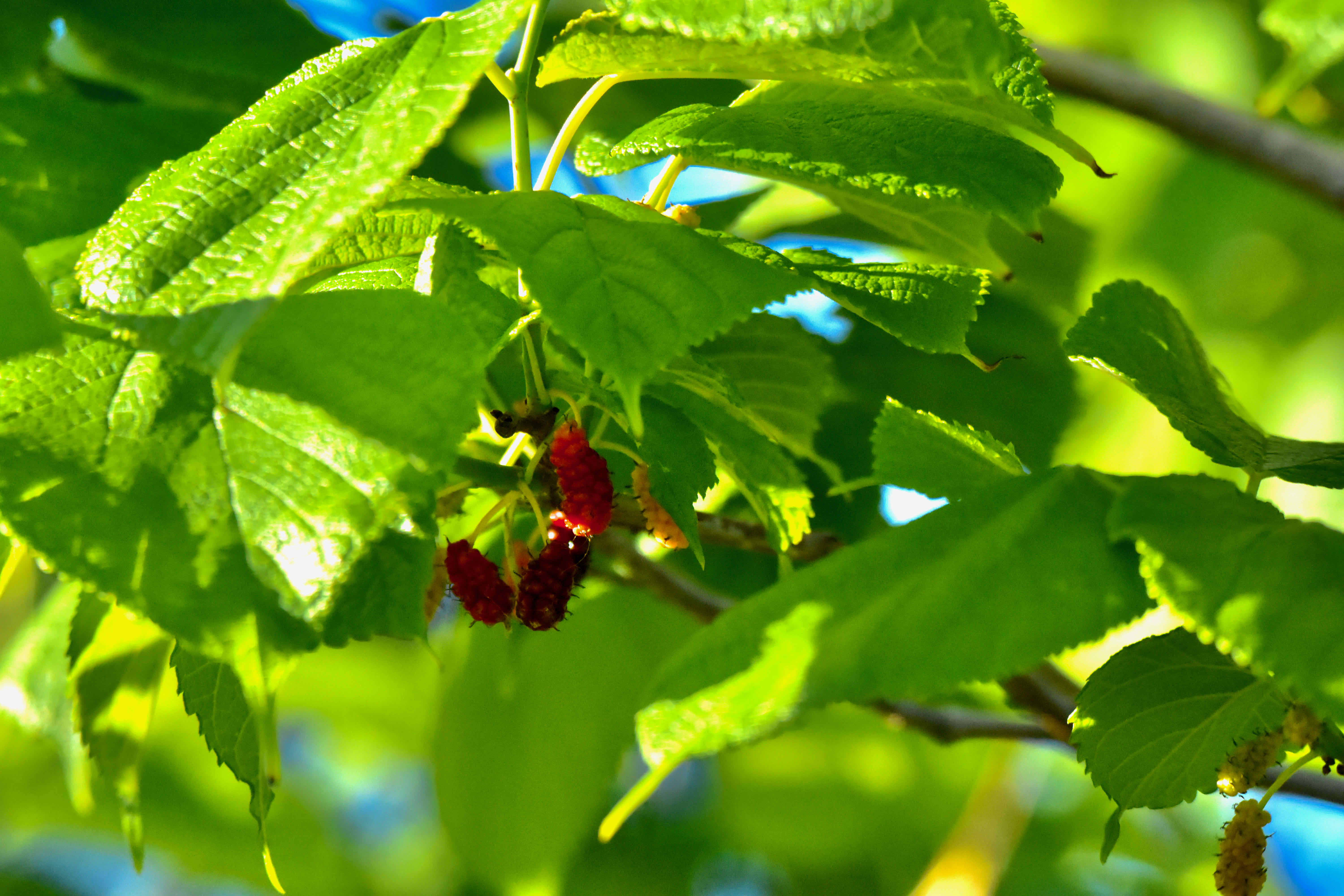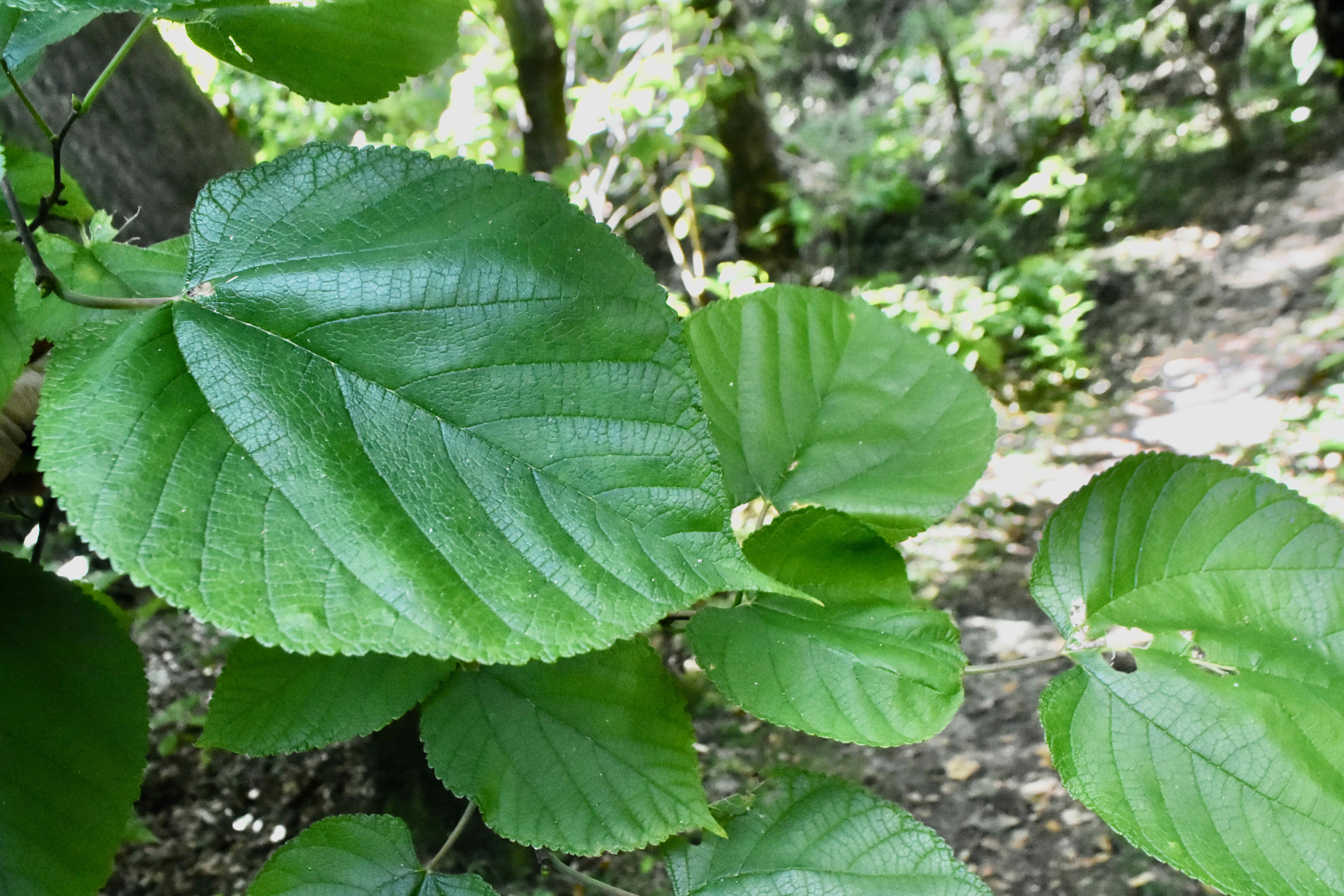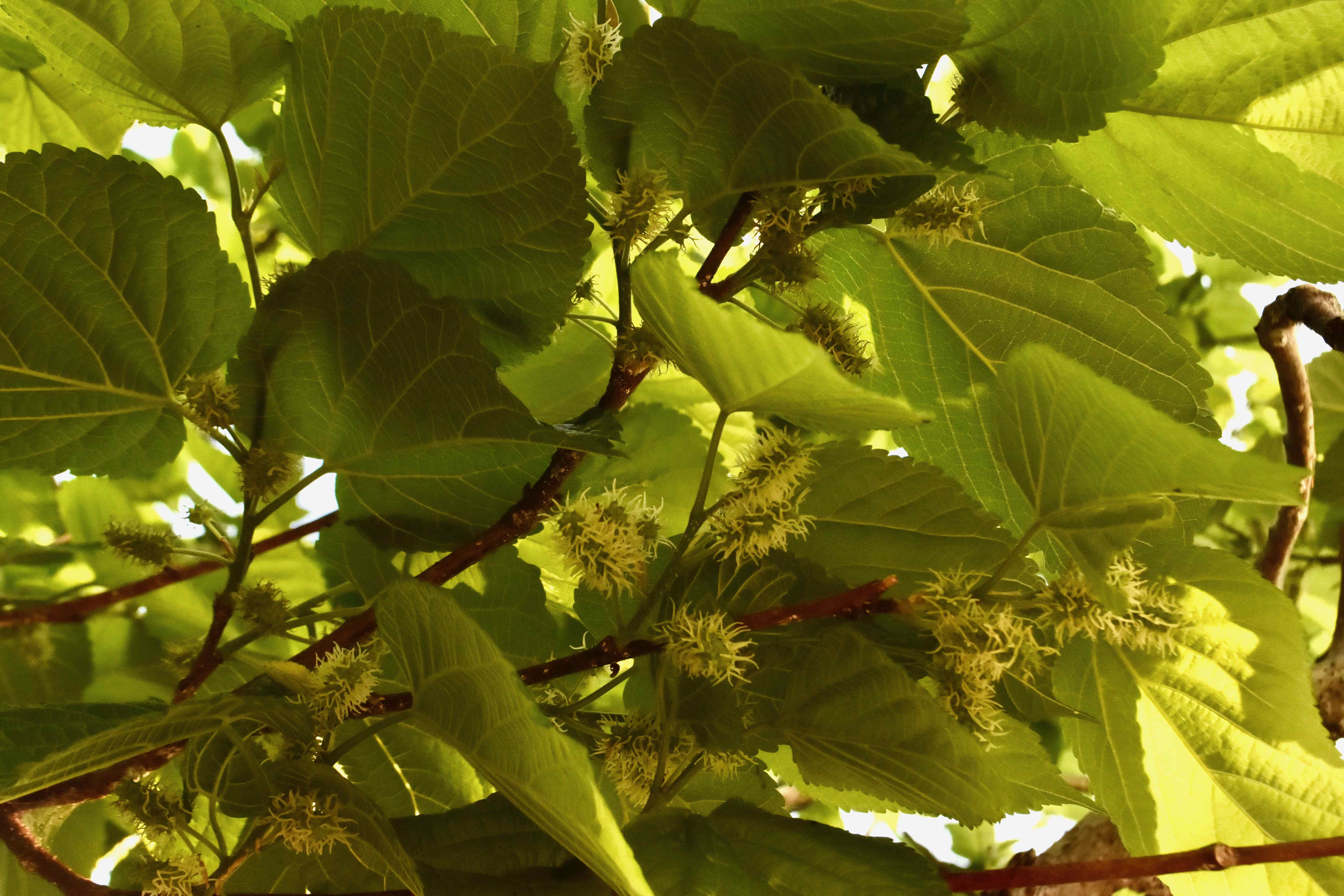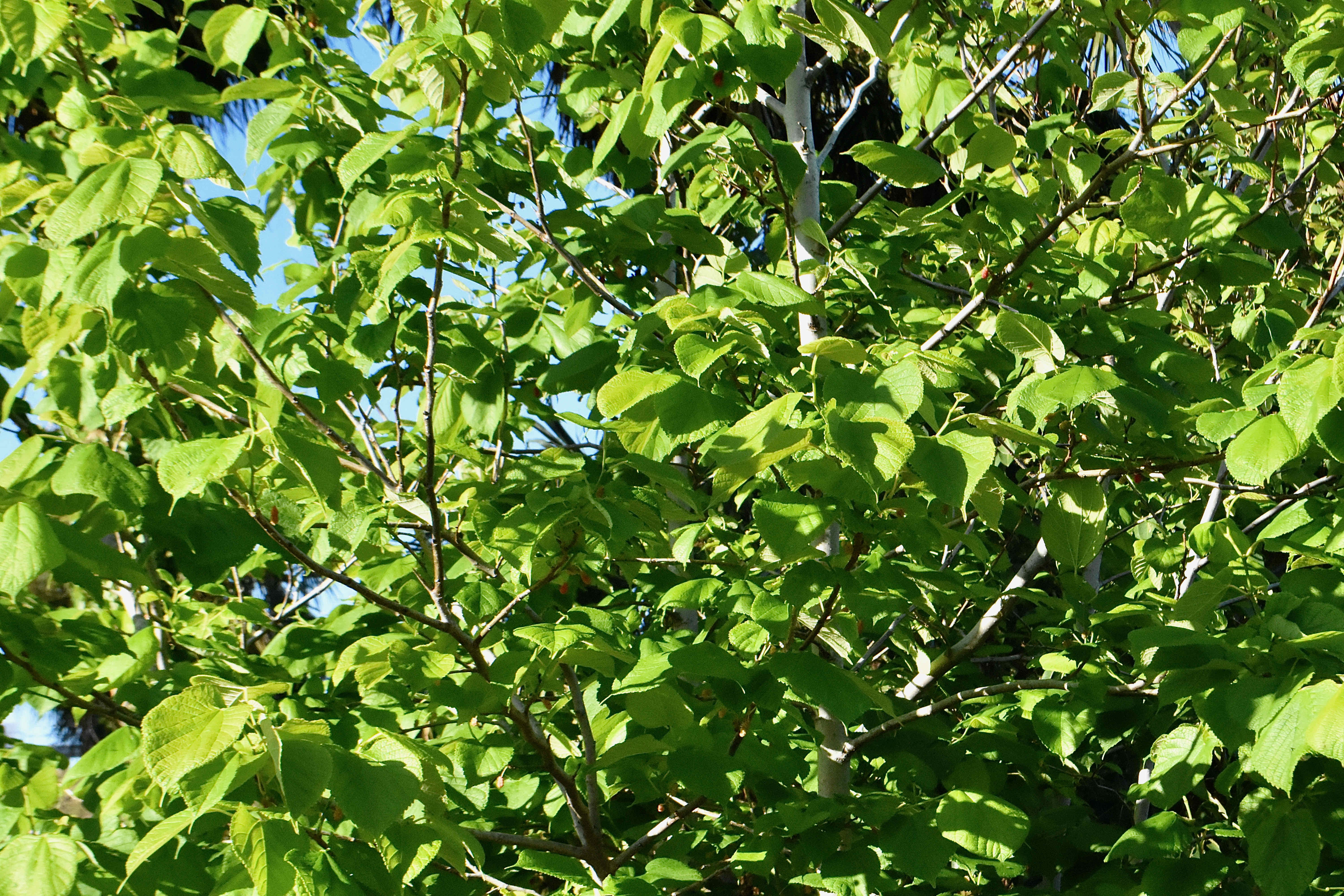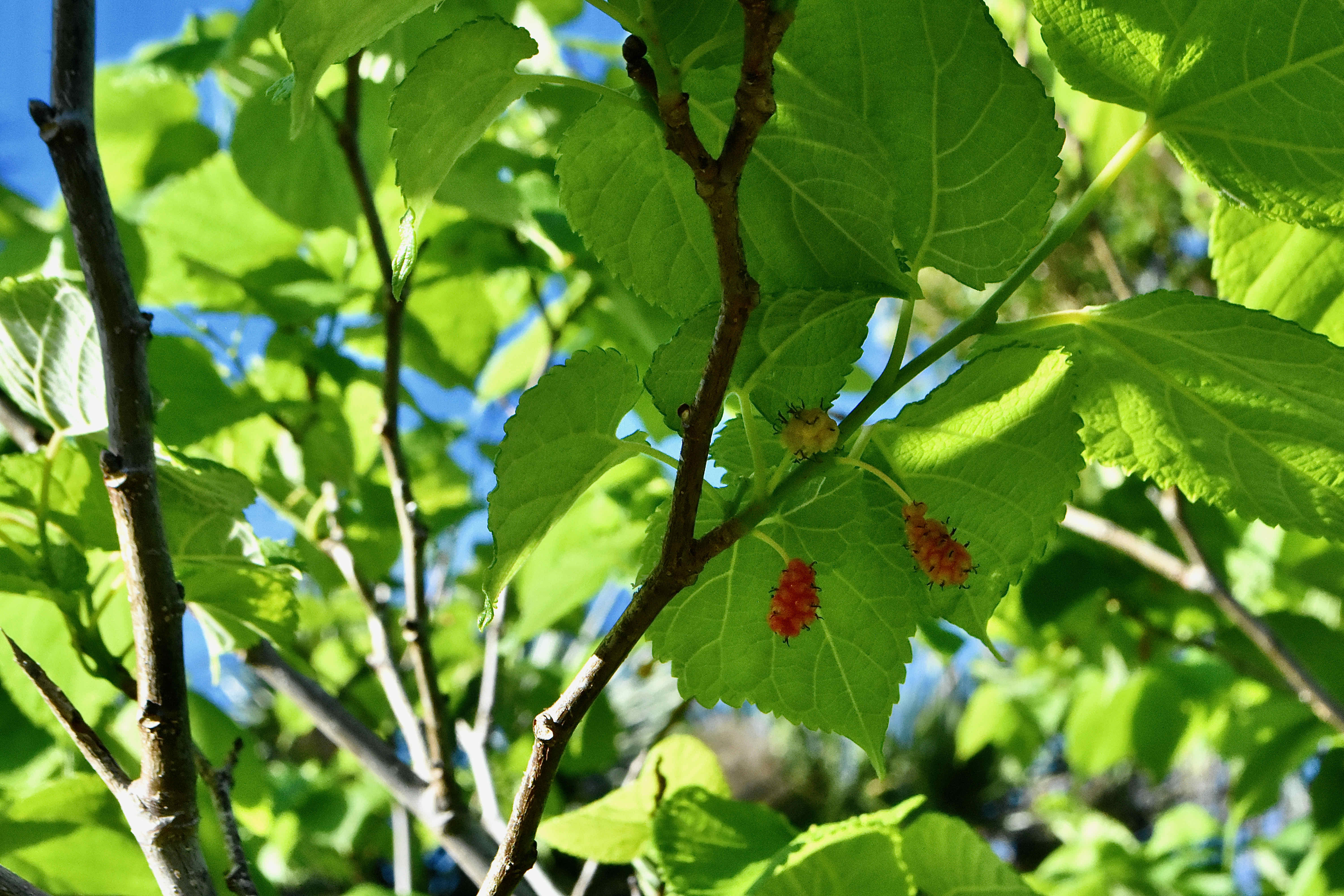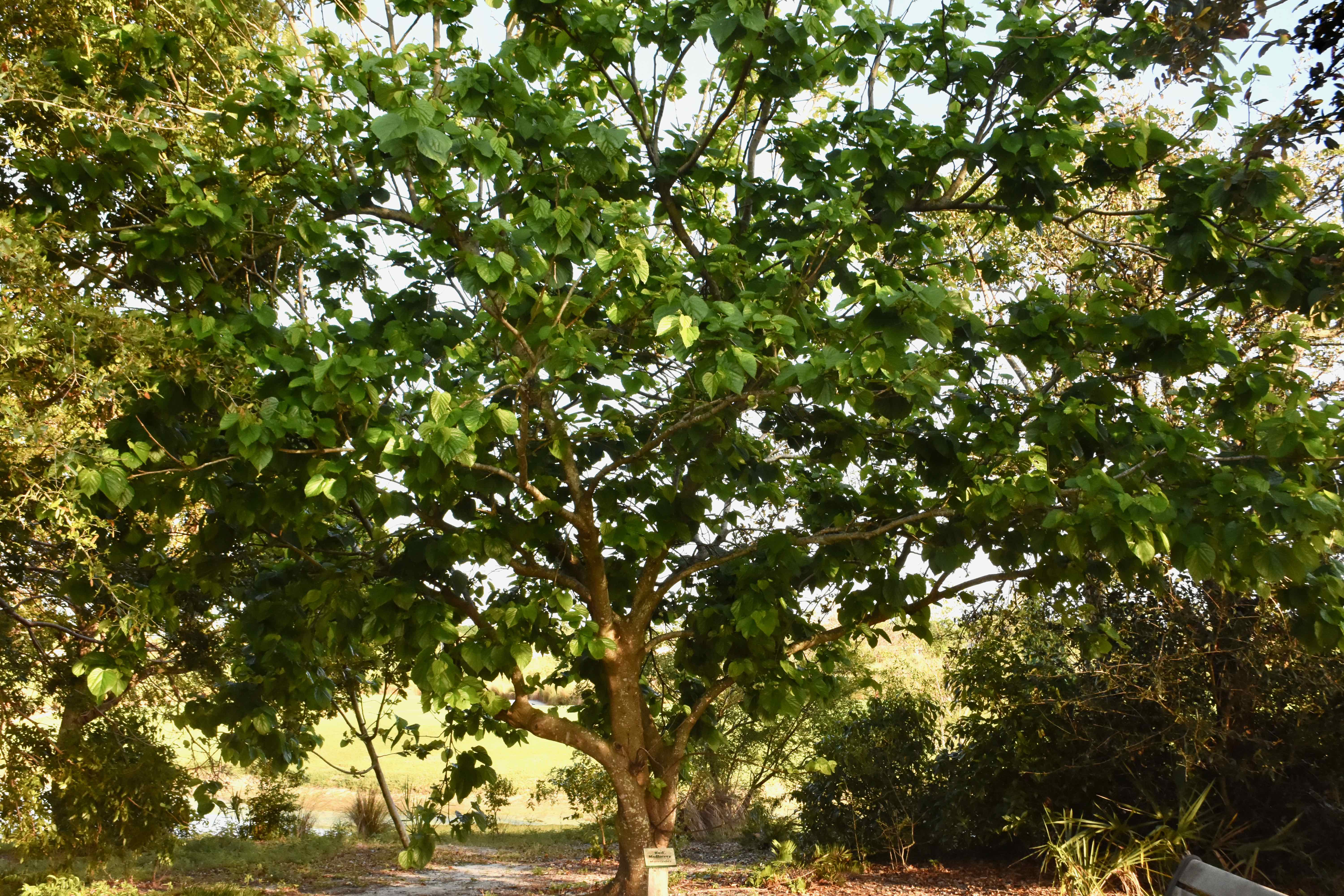
Red Mulberry, photographed at Plantation Preserve Linear Trail, Plantation, Broward County, in February 2018.
Good shade tree? Check. Good looks? Check. Attracts wildlife? Check. Fast grower? Check. Tasty fruit? Check. Maybe double check. Useful medicinally? Check. Useful as lumber? Check.
Red mulberry, Morus rubra, pretty much offers everything one would want in a tree. About the only negative to the tree is the fruit; as delicious as it might be, it can stain a surface when it falls to the ground, so it should be planted away from driveways, sidewalks and patios. Other than that, it’s a great tree in any number of settings.
And if you find it while strolling through the woods somewhere, think about its importance in the natural scheme of things and in the lives of both Native Americans and European settlers. It’s still culturally important in some parts of the country, particularly Appalachia.
Red mulberry is a Florida native tree found in 59 of the state’s 67 counties. All but one of the counties where it’s absent are inland. It’s also found in most of the eastern United States, roughly from Massachusetts to Florida, Minnesota to Texas.
Red mulberry is fairly common in South Florida but can be rare in parts of its range. It’s endangered in Massachusetts and Connecticut; threatened in Michigan, Vermont and Ontario.
It’s generally a medium-sized tree, about 40 tall in South Florida, but it can reach 70 feet, with a broad, rounded crown, its spread equaling its height. It generally grows taller in northern parts of its range, less so in our neck of the woods. Red mulberry can live as long as 120 years.
It’s mostly found in moist hammocks. We’ve seen it mostly in coastal hammocks, places like Jupiter Inlet Outstanding Natural Area, John D. MacArthur Beach State Park and Gumbo Limbo Nature Center. The one exception: Plantation Preserve Linear Trail, where it most likely was planted.
Red mulberry leaves can be variable in shape but generally are oval to heart-shaped, sometimes lobed. They are simple and alternately arranged along the stem, large, about three to eight inches long, serrated — teeth along the outer edges — dark green above, pale green underneath. They have course hairs on their upper surface that give them a sandpapery feel, soft hairs underneath. It is deciduous, meaning it will drop its leaves come winter, particularly up north.
The bark can be gray or reddish brown, and scaley, breaking into plates.
The flowers are greenish white, appearing in dangling clusters called catkins. Red mulberry has both male and female flowers, and both need to be present in order for fruit to be produced. Male and female flowers can appear on the same tree or on separate trees. Red mulberry blooms in spring.
The fruit resembles blackberries in looks, really an aggregate of small, single-seeded fruit called drupelets. They’re about an inch long, juicy, turning from green to red to dark purple when ripe.
The list of avian “fans” of the fruit is long, and includes the likes of wood ducks, eastern bluebirds, summer tanagers, catbirds, kingbirds, great crested flycatchers, robins, Baltimore orioles and the exceedingly rare red cockaded woodpecker. Mammals who munch on red mulberry include opossums, raccoons, fox squirrels and gray squirrels. Even eastern box turtles will eat the berries. White-tailed deer will browse on the twigs and leaves.
We humans are also fans. Red mulberry is used to make jams and jellies, pies and drinks. We also eat it out of hand.
As far back as the 1500s, Spanish explorer Hernando de Soto saw the Muskogee eating dried mulberry fruit. The Iroquios mashed and dried the fruit for use during the winter. The Cherokee added mulberries to cornmeal and made dumplings. The Comanche also ate red mulberry.
In Florida, the Timucua used the fruit and leaves to make dyes; the Seminoles used the branches to make bows.
Red mulberry also was used medicinally — the bark to treat dysentary, to make a laxative and to induce vomiting, the root to treat general weakness and urinary problems. The sap was used externally to treat ringworm. Note: exposure to the milky sap can cause a rash in some people. Also note: the unripened fruit is mildly toxic.
Farmers have used red mulberry fruit to feed hogs and chickens. The wood is considered weak generally, but the heart wood is durable. It’s been used as fence posts, to make farm tools, barrels, furniture, interior finishes and caskets.
Oh and there’s one downside to red mulberry that we failed to mention earlier: its pollen can cause severe allergic reactions, even asthma. If you want to plant red mulberry and allergies might be a problem, make sure not to plant a male tree.
Other common names: American mulberry. It is a member of Moraceae, the fig family.

